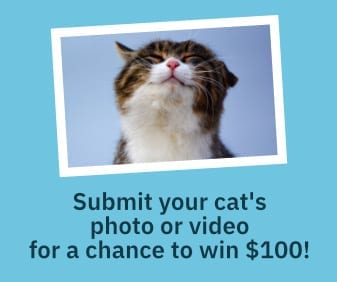Norwegian Forest Cat
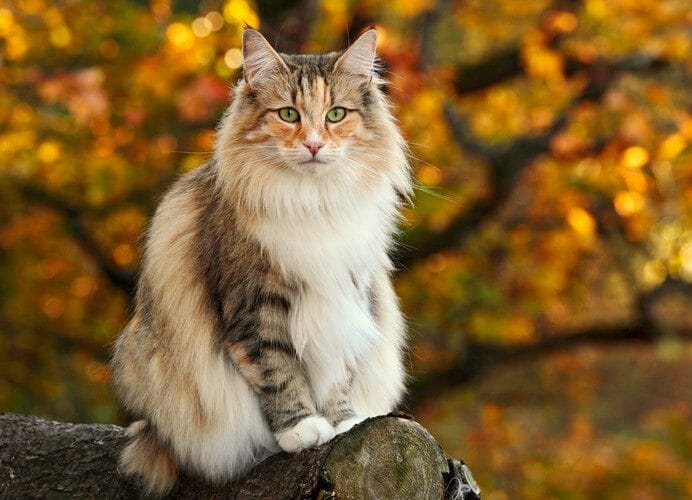
Norwegian Forest Cat Facts
The Norwegian Forest Cat is a domestic feline breed that originates from Northern Europe. Known as Norsk Skogkatt in their native Norway, the breed has adapted well to living in very cold conditions by developing a long and glossy topcoat that sheds water. This is accompanied by a thick and wooly undercoat that provides excellent insulation.
The breed probably descended from short-haired cats that were brought to Norway from Great Britain by the Vikings in around 1000 AD. These felines may have later mixed with long-haired cats that were brought from Turkish Angora and Siberia by the crusaders in the 14th century.
The Norwegian Forest Cat shares some similarities with the Maine Coon. Both breeds have sturdy bodies, longer legs, and large tails. The strong claws of the Norwegian Forest cat make them excellent climbers.
During World War II, the population of the breed dwindled. If it was not for a breeding program started by the recently established Norwegian Forest Cat Club, the breed would have become extinct. In the 1950s, the breed was declared to be the official cat of Norway by King Olav V. Two decades later, the breed was registered with the European Fédération Internationale Féline. The American Cat Fanciers Association followed suit in 1994. In addition to Norway, the breed is also popular throughout the rest of Scandinavia and France.
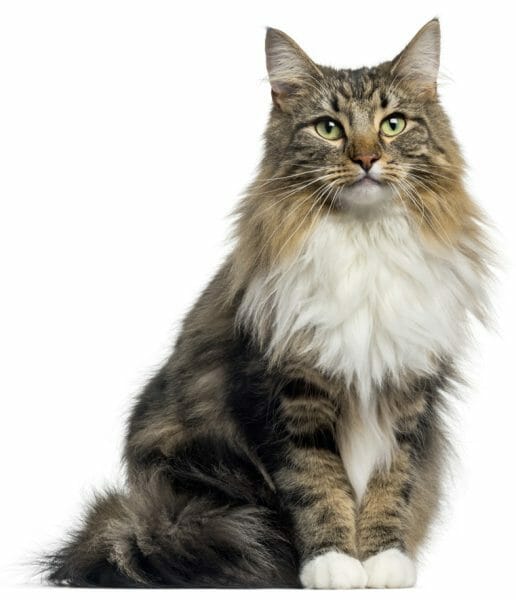
What Does a Norwegian Forest Cat Look Like?
Although larger than the average cat breed, the Norwegian Forest Cat is quite athletic. These muscular felines usually weigh between 12 and 20 pounds. Recognizable by their big bushy tail and a thick coat of fur, they often appear even larger than they are.
The average weight of a domestic feline is between 8 to 12 pounds. This means that even the smallest of the breed is equal in size and weight to the largest example of another breed.
Over the centuries, the breed has adapted well to the harsh conditions with the dense undercoat keeping them warm. However, they will require continual brushing to stop the fur from becoming matted. During the spring, the winter undercoat will start to molt.
Norwegian Forest Cats can be found in a variety of patterns and colors, as listed below.
Common Colors
- Black
- White
- Red
- Blue
- Golden
- Silver
- Cream
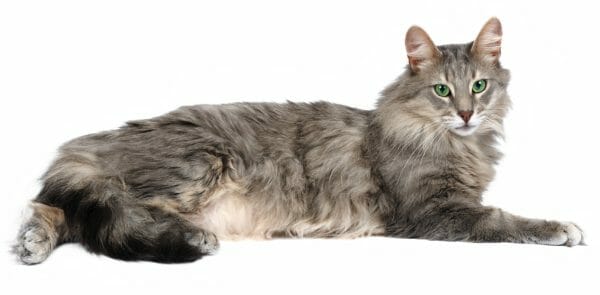
Common Coat Patterns
- Solid
- Bicolor
- Calico
- Tabby
- Tortoiseshell
The eyes of a Norwegian Forest Cat can be gold, green, copper, or a combination of all three. Although comparable in many ways, the most notable difference between Maine Coon cat and Norwegian Forest Cat is the eyes. A Maine Coon has round eyes, whereas the Norwegian Forest cat’s eyes are almond-shaped.
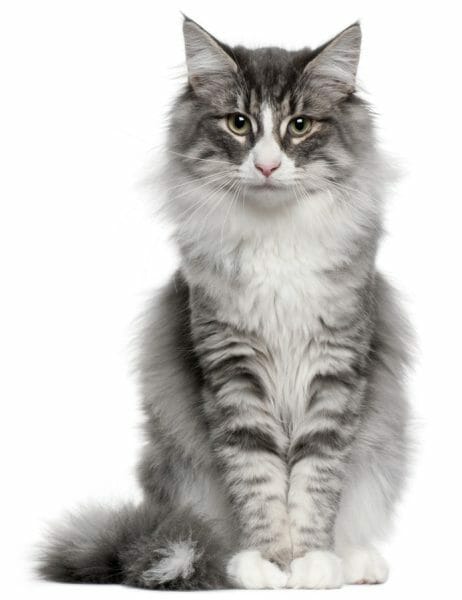
Norwegian Forest Cat Characteristics
Norwegian Forest Cats crave affection and attention from their human owners. That said, they do not make demands of their owners and will not seek out attention for themselves. Instead, they will wait for their owner to approach them.
These calm and intelligent cats are not known to meow often. However, when they do speak, the sounds they make are more like chirps and do not match their appearance.
These felines fit in well with families of all ages. They are playful and tend to get along well with other animals in the home.

Norwegian Forest Cat Care
Due to the thick coat of the Norwegian Forest Cat, grooming is important. To prevent matting, brush the feline’s fur at least twice each week. Particular attention should be paid to this task during the spring months when the thick undercoat will start to shed.
When keeping a Norwegian Forest Cat indoors, make sure it has enough room to run around and play. Regular exercise is important to the health of these cats. MeowWiki recommends providing toys and cat trees to promote activity.
Although these cats can be easily toilet trained, an adequately sized litter box must be provided as Norwegian Forest Cats are larger than most other felines.

Norwegian Forest Cat Health Problems
The Norwegian Forest cat lifespan is approximately 14 to 16 years. Although generally a healthy breed, it is important that owners are familiar with some of the conditions these cats may be genetically predisposed to, including hip dysplasia, luxating patella, hypertrophic cardiomyopathy, skin diseases, and glycogen storage disease type IV.
- Hip dysplasia. This condition is often a problem with larger feline breeds. The condition causes the ball and socket joint of the feline’s hip to grind. If untreated, hip dysplasia can result in arthritis and mobility problems. As a cat with hip dysplasia grows, the two halves of the ball and socket joint develop at different rates. This leads to increased friction between the two parts. Once diagnosed by a veterinarian, the best treatment option is usually surgery.
- Luxating patella. This condition results in the knee joint to fall out of position—making it unstable and loose. It can potentially lead to lameness. Genetically susceptible cats that develop this condition can be treated through surgery.
- Hypertrophic cardiomyopathy (HCM). This common heart condition affecting felines occurs when the muscular walls of the heart begin to thicken. This leads to a decrease in the volume of the heart’s chamber. As a result, the heart must work harder to pump oxygenated blood around the body. HCM can have a serious impact on the other organs in the cat’s body. Although there is no cure for the condition, medication can help control the heart rate and reduce the risk of congestive heart failure.
- Skin diseases. A series of skin conditions called eosinophilic granuloma complex can affect the Norwegian Forest Cat. The condition causes raised red bumps on the skin around the lower abdomen, inner thigh, or face. Left untreated, these bumps may become ulcerated. Treatment usually involves eliminating potential triggers from the cat’s diet and the use of corticosteroids.
- Glycogen storage disease type IV. This disease prevents glycogen from breaking down into glucose and is known to affect Norwegian Forest Cats. The disease can affect the cat’s metabolic processes and may lead to muscle tremors and muscle wastage. The onset of the condition usually occurs during kittenhood and may cause the cat to collapse frequently. There is no cure for this condition, and it is fatal.
Regular visits to the veterinarian will ensure proper screening for these conditions. In addition, these felines should receive regular check-ups with a vet and receive all recommended vaccinations, including those for rabies and distemper. Providing preventive medication for fleas, ticks, and heartworm are also advised.


